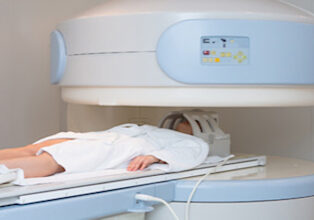5 Little Words Save Money on Healthcare

'Tis the season of making health insurance choices, and the nexus of money and healthcare is on our minds. We're focused on making sure we find a policy that covers us, but doesn't over-cover us so we pay too much. It's about those things that can be planned (the drugs we take, the regular medical appointments we keep). Plus an extra accounting for those things we may not plan for, but may have to deal with, like accidents, or grave diagnoses.
But today's post is quite different for helping to keep our overall costs lower. It's about how we maximize our healthcare dollars in general.
Bottom line: No one wants to spend one penny more on healthcare than is necessary, right?
So today's advice is simple. Five little words:
Stay out of the hospital.
Now - I don't mean that in the snarky "don't get sick and it won't be too expensive" way. I mean - there are services people turn to a hospital to provide that just costs them (and the system, too) way too much money!
I'm talking about services that have always been provided by hospitals, but no longer require a hospital to provide them.
Examples:
People with no primary care doctor too often show up in hospital emergency rooms when they become fearful of symptoms and don't know where else to turn. But they might just have a bad cold or upper-respiratory problem, or it might be an allergy, or a bug bite, or possibly their blood sugar gets too low and they faint... and later they get sky-high bills.
Or....
Labwork is ordered by a doctor - blood work, urinalysis, others.... Not knowing where else to go, and since the doctor's office is right across the street, some patients will head over to the hospital for their lab work, only to find out later that the lab work at the hospital cost an arm and a leg.
Or....
Imaging is required - maybe an annual mammogram, or a bone scan, or a lung or heart scan... Hospital imaging centers would love for you to use their facilities! But you'll pay a premium for something that would have cost far less in another center.
Stay out of the hospital.
In all those cases, there are alternatives, most of which will accept your insurance:
- A free-standing clinic or urgent care center will cost less.
- Freestanding labs cost far less than labs in hospitals.
- Freestanding imaging centers for radiologic requirements - scans and x-rays cost far less
Why does it cost less to use non-hospital services?
Hospital services are set up for the use of the hospital, and because they have enormous overhead, they charge much more for everything. You may not realize this, but if you drop in to a hospital for your annual mammogram, you are also paying for the new wing they just built, or the new surgery robot they just installed.

In particular, if you have a high deductible, why would you spend any more than you have to? If you have a $5000 deductible, and you have your choice between going to the hospital's imaging center for your CT scan at $900 or a CT scan at a freestanding imaging center for $350 -- which makes more sense?
Or, if you have a co-pay, your co-pay percentage of $350 is only about one-third of that percentage of $900. Yes - you can save money!
It also makes sense if you use your insurance, too. Because when you use insurance, you are affecting future insurance cost. The cost of insurance is based on many things including reimbursements from prior years. It's not a one-on-one correlation (if you spend less this year, your policy might cost less next year). But it is cumulative for all insured patients, so by keeping costs to the insurer lower, over time you are helping everyone else who has that insurance.
Insurers are beginning to require your use of freestanding providers. In the fall of 2017, Anthem Blue Cross and Blue Shield (which services 14 states) began requiring its customer-patients to use freestanding imaging providers. There is only one reason an insurer would create such a requirement - less cost.
Other insurers, and the big kahuna, Medicare, won't be far behind. If you are insured by one of these companies or Medicare, and you don't follow their requirements, you'll find yourself with major bills to pay.
How do you find the best freestanding, non-hospital providers?
There are a few ways you can do that, with a few cautions, too.
- Ask your doctor - but with a caveat. If your doctor has no ownership in a freestanding center, then you will probably get good advice. But if your doctor is employed by, or is an owner/part owner/investor in a freestanding center, then you likely will not.
- Check with your insurer to see what centers are covered (and not covered.) That's no assessment of quality, but at least you won't be using a service that requires total out-of-pocket payment.
- Go online for reviews, call a few centers, and ask them questions about their services. Be specific about the service you need. What kind of equipment do they use? Who will read the scan? (Many freestanding centers will email your scan out of the country to be read immediately - and that has its own pros and cons.) How will your reports be delivered to your doctor? And - something we aren't used to in healthcare at all - ask for prices!
Need help making these arrangements?
If you have trouble figuring out the pros and cons, then it's time to call a patient advocate. Many patient advocates are up-to-speed on local-to-you centers, and if they aren't, they know the questions to ask and how to help you make your best choices.
But the bottom line is this, when it comes to imaging, labwork, or non-emergency needs (and yes, even some easier-to-tackle emergency needs too), then
Stay out of the hospital.
Find a Health / Patient Advocate or Navigator
Learn more about The Alliance of Professional Health Advocates
